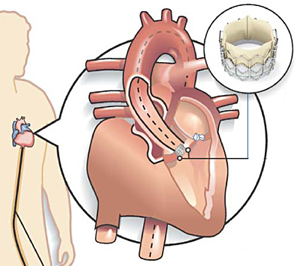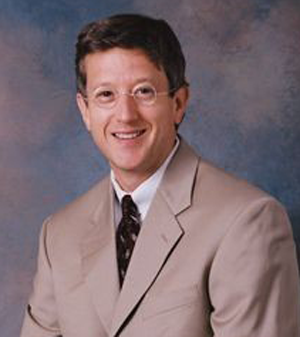Heart Institute Performs Minimally-Invasive Aortic Valve Replacement
Up to 1.5 million people in the United States suffer from aortic stenosis, a progressive disease that causes narrowing or obstruction of the aortic valve. On April 2 2012, a talented team of cardiac surgeons, interventional cardiologists and staff from the TriHealth Heart Institute completed their first two transcatheter aortic valve replacement (TAVR) procedures, a minimally invasive treatment option for those who are not candidates for open heart surgery.

Good Samaritan Hospital was selected to become only the fourth site in the state of Ohio and one of just 150 locations in the country to offer this surgical option as a result of their expertise in valve replacement surgeries. The TAVR procedure requires an intense collaboration among interventional cardiologists, cardiac surgeons, anesthesiologists and cardiac catheter lab nurses and staff.
The TAVR procedure enables the placement of a collapsible aortic heart valve into the body via a catheter that is inserted through a small incision in the leg and threaded up to the heart.
Prior to the advent of TAVR, there was no definitive treatment option for inoperable patients, as these patients were unable to undergo surgical aortic valve replacement therapy – the gold standard treatment for most adult patients with severe aortic stenosis. Patients with aortic stenosis can often benefit from surgery to replace their diseased valve, but only about two-thirds of them undergo the procedure each year.
Many patients are not treated because they are not a candidate for surgery, have not received a definitive diagnosis, or because they delay or decline the procedure for a variety of reasons. TAVR opens up a new option for inoperable patients.

“Four years ago, patients with this condition were told nothing could be done,” said J. Michael Smith, MD, cardiothoracic surgeon and Director of Research, Department of Surgery at Good Samaritan Hospital. “Two years ago, patients would have been sent somewhere in the country to take part in a clinical trial that may or may not have been successful. Today, our talented group of physicians and staff are performing the surgery at Good Samaritan Hospital. I couldn’t be more proud of our team.”
Several more TAVR procedures are scheduled between now and the end of the month at Good Samaritan Hospital.